|
 Secure Site
Secure Site
|
 |
Archive for the 'Zen Timers' Category
 Stress Cures From traffic jams to lost luggage, holiday travel can leave you frazzled. This year, get the holidays off to a stress-free start by arriving at your final destination composed and energized. Just follow these simple tips from Kate Hanley, author of The Anywhere, Anytime Chill Guide.
Stretch It Out
Where stress starts, tight muscles follow. Ease the strain of hours sitting in the sky or on the road with a simple, seated stretch Hanley calls The Number Four: Place an ankle over the opposite knee (making the shape of a four) then lean forward and rest your elbows on your shin.
Apply Pressure
If icy roads or midflight turbulence leave you with a pounding heart and racing thoughts, Hanley recommends a little acupressure. Simply curl each finger down until it touches the palm. The subtle move lessens anxiety by slowing down the heart and, in turn, quieting the mind.
Say It Out Loud
“The very act of traveling requires an element of surrender,” says Hanley. When plans go awry (a delayed flight, a missed exit) — and they will — slowly repeat the mantra “I’ll get there when I get there.” This helps you stay mindful of what’s out of your control.
Wish Them Well
With everyone rushing to get from point A to point B, you’re guaranteed to run in to someone who will ruffle your feathers. “The trick to not losing your cool,” says Hanley, “is to develop compassion.” Instead of flying off the handle at that impatient driver or curt customer service rep, try a kindness meditation. Hold an image of them in your mind and put yourself in their shoes with an empathetic thought: “I’m sure he’s anxious to see his family” or “I bet she’s had a long day.”
adapted from Body + Soul November 2009
 Zen Timer for your wellbeing practice Now & Zen
1638 Pearl Street
Boulder, CO 80302
(800) 779-6383
Posted in Chime Alarm Clocks, intention, Meditation Timers, Meditation Tools, mindfulness practice, Now & Zen Alarm Clocks, Well-being, Zen Timers
Late autumn’s seasonal trends-dropping temperatures, fading light, and your body’s dipping defenses-invite all manner of maladies: colds and coughs, debilitating flus, and the lingering malaise known as the winter blues. But with a few herbal tinctures — simple yet powerful remedies that you can make yourself — you’ll be set up to stave off these ailments and, when they do find a foothold, minimize your discomfort and speed up your recovery.
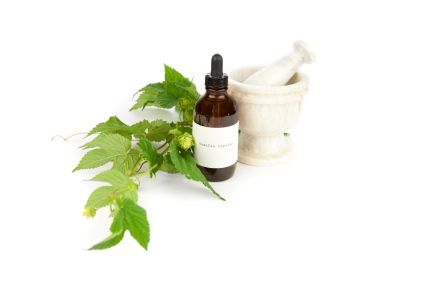 winter remedies
Tinctures, which are concentrated liquid extracts of medicinal plants, remain my favorite remedies for acute, wintertime ailments because of their sheer potency. Taken by the dropperful, they work well, and they work fast. Also called herbal extracts, tinctures have been made for thousands of years by soaking fresh or dried herbs in a solvent, such as vodka or brandy, to extract the plants’ medicinal properties. While herbal-tincture manufacturers use more complicated, exacting methods, the traditional technique is simple. It requires only easy-to-find ingredients and common kitchen tools, yet makes some of the most effective tinctures available — for pennies per dose.
Medicinal herbs can be tinctured alone — a whole-plant echinacea tincture will serve you well — or with other compatible herbs. The herb combinations here are among my most trusted, time-tested remedies. Echinacea, goldenseal, and turmeric make up Super Immune Support, my standby for fending off infections. Cold and Fever Fighter contains elder, yarrow, and peppermint to help ease colds and fevers. Cough and Sore Throat Soother features soothing, lung-supportive mullein, licorice, and wild cherry bark, plus ginger for a little zest. Garlic, onion, ginger, cayenne, and horseradish give Fire Cider its warming, infection fighting kick. And Mood Booster, for easing seasonal depression, includes hawthorn, oat tops, lemon balm, and St. John’s wort
Whether you make one of these recipes or all five, keep in mind the two essential principles of herbal medicine making. First, quality ingredients make quality products. If you can’t grow your own herbs, buy them from reliable growers or distributors. Likewise, when choosing your solvent, the medium used to extract and deliver the plants’ medicine, choose the best. Second, but just as important, intention matters. Native American healers, who used many of the herbs in these formulas, had a deep reverence for the plants’ healing powers. When they dug the plants, they did so with respect and prayer, and when they made them into medicine, they also prayed. Without prayer, they said, the plant’s medicine — its essence — stayed in the ground. Among people who use “green medicine” today, there is still a deep sense of respect for the plants. I invite you to share this feeling as you gather your herbs and brew your tinctures. In my experience, herbal remedies made with clear intention and an appreciation for the plants are much more effective.
Simple Tincture Making
1. Gather the materials.
When people first start making tinctures, they often go overboard and make gallons. But tinctures are highly concentrated and taken in very small doses — a little goes a long way. To make about a pint of tincture, you’ll need a clean, dry, quart-sized jar with a tight-fitting lid, enough herbs to fill the jar halfway, and roughly a pint and a half of solvent (the herbs will soak up some solvent). Most of my formulas call for 100-proof brandy or vodka, both excellent solvents. If you prefer not to use alcohol, you can substitute vinegar.
2. Prepare the herbs.
If you have any fresh herbs, use them. High-quality dried herbs, however, are just as potent, and available year-round. If you are using fresh herbs, rinse them with water to remove any dirt, then chop them finely. (Dried herbs are usually finely chopped when you purchase them.) Fill your jar halfway with herbs. For a strong, effective tincture, be sure the jar is densely filled.
3. Add the solvent.
Pour the solvent over the herbs until they’re completely covered, then add an additional 2 to 3 inches of solvent. The herbs must be completely submersed to prevent bacteria from growing. Cover the jar with a tightly fitting lid. Herbs often swell as they soak up the solvent; if they start to “emerge” above the liquid, add more solvent. Note: If using vinegar, as in Fire Cider, warm it on a stovetop before pouring it over the herbs; this helps facilitate the release of medicinal constituents.
4. Let the tincture sit for 4 weeks.
During the process of soaking the herbs in the solvent, the plants soften and break down (a process known as maceration), releasing their medicine. Most Western herbalists recommend letting tinctures macerate for 4-6 weeks. In Chinese medicine and several indigenous traditions, however, herbs are left to soak for months, even years. I have found that the longer tinctures macerate, the more effective they are, so consider a month your minimum. When starting the maceration process, label and date your jars so that you remember when you started.
5. Shake daily, with intention.
Shaking the tinctures while they’re soaking facilitates the breakdown of medicinal constituents and prevents the herbs from packing down at the bottom of the jar. It’s also an invitation to add some of the old magic to the science of herbal medicine. When you shake your tinctures, do so with your best healing intention. You can sing to your tincture jars, stir them in the moonlight or the sunlight, wave feathers over them — whatever you feel moved to do. Your remedies will be the better for it.
6. Strain the herbs.
After at least 4 weeks, your tincture will be ready for use. Line a stainless-steel strainer with cheesecloth or muslin, and place over a large glass jar or measuring cup. Pour the liquid slowly through the strainer. When finished straining, squeeze the herb-filled cheesecloth or muslin to wring out every drop. Reserve the liquid — this is your medicine — and discard or compost the herbs. Pour the finished tincture into a clean, dry glass jar with a tightly fitting lid; Mason jars work well, as do amber-colored glass jars (available at herb stores or online). Label your tincture with the contents and date.
7. Store the tincture properly.
When stored properly, tinctures last for years. Both light and heat can break down the medicinal components, so keep your jars of tinctures in a cool, dark place. It’s a good idea to keep a small supply of the tincture ready for use in a 1- or 2-ounce amber-colored bottle with a dropper top (available at herb stores or online).
Dosage and Use
Tincture dosage varies depending on the individual and the herbs being used. For chronic problems and for remedies you’re using as a tonic, such as Mood Booster, the general adult dosage is 1/2 to 1 teaspoon three times daily. For acute ailments, such as colds and flus, small, frequent doses are much more effective: for adults, 1/4 to 1/2 teaspoon every hour. Tinctures should be diluted in a small amount of warm water; they’re very strong tasting, so most people prefer to take them “down the hatch” rather than sipping them.
Solvents
The solvent is the liquid used to extract the herbs’ medicine. There are two solvents used in these recipes, each with different benefits.
Alcohol
A potent, effective solvent, alcohol extracts most plant constituents, including fats, resins, waxes, and most alkaloids (some of the strongest plant compounds). The body rapidly assimilates alcohol tinctures, and their effects are quickly felt. Furthermore, alcohol makes an excellent preservative, maintaining the integrity of the tincture for many years. Brandy and vodka are perfect for the traditional method of tincture making; both can be purchased at 100 proof, which provides an ideal alcohol-to-water ratio. (Water extracts many important constituents, like vitamins and volatile oils.) For preservative properties and extraction purposes, you must use at least 50-proof alcohol.
Vinegar
As a food, vinegar is completely nontoxic, and well tolerated by almost everyone. While it is not as strong or effective a solvent as alcohol (it does not break down as many plant components), it’s a good alternative for alcohol-sensitive people and for children. You can integrate vinegar tinctures into your daily diet, using them as a salad dressing (use organic apple-cider vinegar if possible). Most literature reports that vinegar tinctures have a short shelf life. My experience, however, has been that when stored in a cool, dark place, they will last for several years.
Wintertime Formulas
Note: If you have a serious condition, are pregnant, or take medication, consult your health-care provider before using these or any herbal remedies.
Super Immune Support
Take 1/4 to 1/2 tsp. per hour at symptom onset.
Solvent: 100-proof vodka/brandy
2 parts echinacea root, flower, and leaf
1 part turmeric
1 part cultivated goldenseal root (Use cultivated goldenseal; this herb has been over-harvested.)
Cold and Fever Fighter
Take 1/4 to 1/2 tsp. per hour at the onset of symptoms.
Solvent: 100-proof vodka/brandy
1 part elder flower and elder berry
1 part peppermint leaf
1 part yarrow flower and leaf
Cough and Sore Throat Soother
Take 1/4 to 1/2 tsp. per hour at the onset of symptoms.
Solvent: 100-proof vodka/brandy
2 parts mullein leaf
1 part licorice root
1 part wild cherry bark
1/2 part ginger root
Fire Cider
Take 1/4 to 1/2 tsp. per hour at the onset of a cold, or as a daily warming tonic. Makes a great salad dressing.
Solvent: apple-cider vinegar
1 part garlic
1 part onion
1/2-1 part freshly grated horseradish
1/2 part ginger small pinch cayenne
honey to taste (add to finished product)
Mood Booster
To prevent or ease the winter blues, take 1/2 to 1 tsp. three times daily.
Solvent: 100-proof vodka/brandy
2 parts hawthorn berry, plus flower and leaf if available
2 parts lemon balm
1 part St. John’s wort
1 part milky green oat tops
adapted from Body + Soul, Nov/Dec 2005
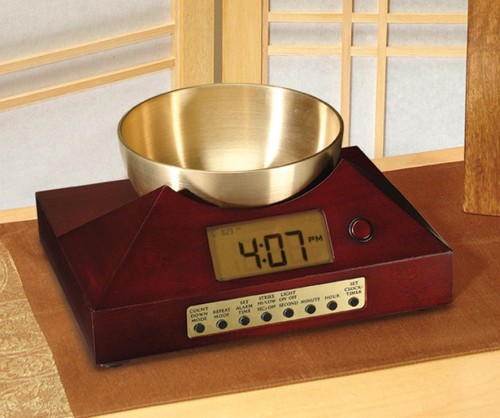 Zen Timepiece with Gong Bowl, a Timer and Alarm Clock
Posted in Zen Timepiece by Now & Zen, Zen Timers
Life this time of year can feel like a marathon of family gatherings, shopping, and general overdoing. Instead of relying on vast amounts of caffeine to keep up the pace, try a homemade herbal chai to build your body’s reserves.
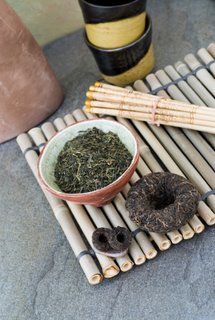 how to make a tea to improve your stamina This energy-enhancing blend stars eleuthero (also known as Siberian ginseng), which helps the body adapt to stress; burdock to gently detox the liver; and licorice to balance the adrenal system (omit if you have high blood pressure). Ginger, cinnamon, and cardamom warm your body and add a spicy-sweet flavor.
Ingredients
Makes 1 quart
- 3 teaspoons dried eleuthero
- 2 teaspoons dried burdock root
- 2 teaspoons dried licorice root
- 1 teaspoon dried (or 2 teaspoons fresh chopped) ginger
- 1 teaspoon cinnamon chips (or 1 cinnamon stick)
- 1 teaspoon cardamom pods
Directions
Set your Now & Zen Timer with Chime for 20 minutes. Simmer herbs in 1 quart of water for 20 minutes. Strain and discard herbs. Pour a cup, adding milk and honey to taste if desired. Keep remaining tea in a jar or thermos. Tea will keep for two days in refrigerator.
adapted from Body + Soul Magazine, 2010
 Chime Timers and Clocks with Chime in Bamboo, Walnut, Maple, and Black Lacquer Now & Zen
1638 Pearl Street
Boulder, CO 80302
(800) 779-6383
Posted in intention, Zen Timers
Natural Remedies for the Winter Season.
Grapefruit has a compound called naringenin that studies have shown can make our insulin more effective.
2 cups ruby red grapefruit juice (squeezed from 2 grapefruits)
2 to 4 tablespoons honey
1 cinnamon stick
1/2 teaspoon whole allspice berries
Directions:
In a medium pot, combine juice, honey, cinnamon, allspice, and 1/2 cup water. Bring to a boil over high heat; strain and discard solids. Serve with a grapefruit segment or strip of zest.
adapted from Body + Soul Magazine, 2009
 Black Lacquer Zen Alarm Clock and Timer
Now & Zen
1638 Pearl Street
Boulder, CO 80302
(800) 779-6383
Posted in Well-being, Zen Timers
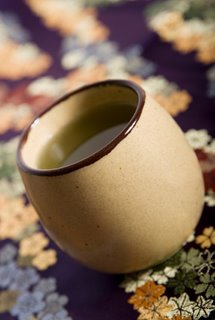 Zen Timers with Chimes to Make Tea for Winter Colds Natural Remedies for the Winter Season.
Common culinary sage (Salvia officinalis) can help to ease sore throats and dry up sinuses.
How to use: For a sore throat, make a strong tea by pouring 4 ounces of water over 2 teaspoons of dried or fresh sage. Set your Zen Timer with Chime for 10-15 minutes, steep and strain. Cool to room temperature. Gargle until the mixture is gone. Repeat three times daily. For drippy sinuses, drink a cup of regular-strength sage tea.
adapted from Body + Soul Magazine, 2009
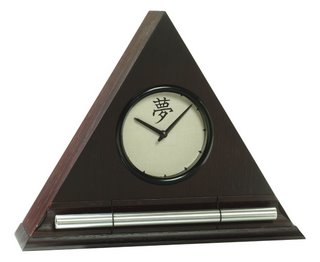 Dream Kanji Zen Alarm Clock with chime in Dark Oak Finish, a wellness tool and tea timer
Now & Zen
1638 Pearl Street
Boulder, CO 80302
(800) 779-6383
Posted in Well-being, Zen Timers
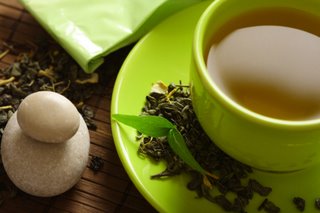 Set your Zen Timer for 20 minutes to make Slippery Elm Tea Natural Remedies for the Winter Season.
A sore-throat soother extraordinaire, slippery elm (Ulmus rubra) products are high in “mucilage,” a substance that coats the throat and helps relieve coughs.
How to use: Look for slippery elm lozenges at health-food stores; follow package directions. To make a tea, simmer 1 tablespoon dried slippery elm bark per cup of water; set your Zen Timer with Chime for 10-15 minutes, steep, strain and drink. Add a small almount of honey to sweeten.
adapted from Body + Soul Magazine, 2009
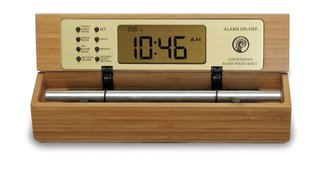 Bamboo Zen Timer and Natural Alarm Clock with Gentle Chime
Now & Zen
1638 Pearl Street
Boulder, CO 80302
(800) 779-6383
Posted in Well-being, Zen Timers
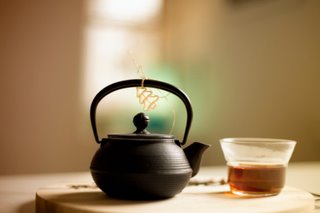 Elderflower Tea for the Winter Season Natural Remedies for the Winter Season.
The flower form of the elder plant (Sambucus nigra) can induce sweating, which may help reduce fever.
How to use: Look for elder in cold formulas. To make a tea, pour boiling water over a teaspoon of dried elderflower. Set your Zen Timer with Bowl/Gong for 10-15 minutes. Steep 10 to 15 minutes, then strain. Drink up to three cups per day. Or make a tea that combines elder, echinacea, and a pinch of peppermint.
adapted from Body + Soul Magazine, 2009
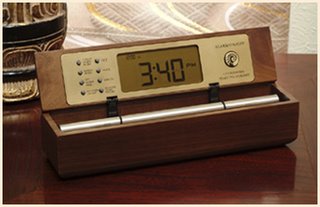 Walnut Wood Zen Timers with Chime, a perfect tea timer. Now & Zen
1638 Pearl Street
Boulder, CO 80302
(800) 779-6383
Posted in Well-being, Zen Timers
 how to start a walking meditation Instructor John LeMunyon, co-owner of Heartwood Yoga and Body-Centered Therapies (heartwoodyoga.com) in Birmingham, Ala., is a licensed massage therapist and registered yoga teacher whos been meditating for over 25 years.
What is it? This component of numerous meditation traditions slows the walking process with the intention of bringing into awareness its most basic partslifting the foot, swinging it, placing it downin order to bring a greater consciousness to daily life. When we break down the motion of walking, we realize how each action is actually a collection of sub-actions, and how the mind and body work together to create physical movement. This is not walking for transportation, its walking as a tool for developing mindfulness in the present moment, says LeMunyon.
You can practice walking meditation by itself, or combine it with one of the seated styles. Used as an interlude, the walking technique is a good way to embody the insights gained during seated practice and heighten their relevance to daily life.
Walking meditation shows clearly the Buddhist precept that all action is preceded by intention, says LeMunyon. Theres always an intention, and when we are present to the moment there is always a choice. Its at the level of intention that we make our choices of how skillfully we want to live our lives.
Whats it good for? When you find yourself restless or agitated, a physical practice like walking is a great way to quiet the mind and find grounding in the body. It can also help ease the transition from sitting meditation to the motion of real life, and vice versa.
How long does it take? To begin, try walking for about 15 steps in two directions, about five minutes. Beginners can try interspersing this with five minutes of sitting meditation.
 mindfulness walking How Do I Do It?
1. Find a private place indoors or out with level ground and at least 20 feet of space.
2. Stand in a relaxed position with your feet parallel, shoulders loose, arms draped at your sides or clasped lightly in front of or behind you. Focus your eyes softly on the ground about 6 to 8 feet ahead (looking right at your feet can be distracting).
3. Breathe in again as you lift the heel of your right foot. Pause and breathe out, leaving your toes resting on the ground.
4. Breathe in as you slowly swing your right foot forward. Place the heel of your right foot on the ground as you exhale and roll the rest of the foot down, transfering your weight so its balanced equally between both feet. Pause for a full breath.
5. Repeat with your left foot, matching each movement with an inhalation or exhalation, and continue for about 15 steps. The goal is to keep your mind fully focused on your bodily sensations; it may help to think or softly say, lift, pause, swing, place, transfer, pause as you perform these movements.
6. When youve completed your paces in one direction, come to a stop with your feet parallel, and pause for a few breaths. Then turn slowly, using the same movement pattern, and match each movement of your turn with an inhale or exhale. Pause again, facing the path you just walked. End by retracing your steps back to where you started.
Tip: You may feel self-conscious walking this way, so try it in your hall or backyard rather than a park where onlookers may distract you.
adapted from Natural Health Magazine, By Frances Lefkowitz
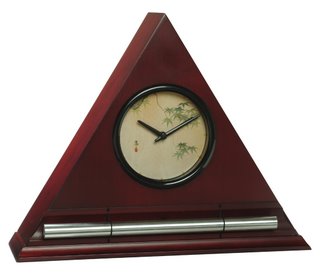 Zen Chime Clock, Meditation Timer and Alarm Clock for A Progressive Awakening Now & Zen
1638 Pearl Street
Boulder, CO 80302
(800) 779-6383
Posted in intention, Meditation Timers, Meditation Tools, mindfulness practice, Zen Timers
 mindful eating Conscious eating
Just as you bring mindfulness to your yoga practice, you can be mindful at mealtime. Yoga philosophy and all of the world’s healthiest diets recommend a conscious eating practice for optimal health. Mediterranean cultures traditionally regard meals as experiences to be savored and a life pleasure meant to be enjoyed. Asian cultures consider eating an aesthetic experience and reverentially enjoy beautifully prepared and presented foods that nourish the senses—to see, smell, touch, taste, and observe any sounds—while slowly eating the meal.
The Slow Food movement is reviving and sharing the benefits of conscious eating and the enjoyment of wholesome foods. Slow Food USA, part of the international Slow Food movement, is dedicated to supporting local farmers, the production of regional foods, and small producers. The movement promotes a slower lifestyle that cultivates time for conscious food preparation and eating, and opposes the fast life exemplified by corporatized foods and degradation of farmland.
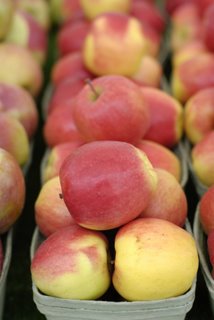 conscious eating, a mindfulness practice Eat Here Now
How can you incorporate mealtime mindfulness into your own life? Try the following essential components of a conscious-eating practice.
1. Schedule time for meals. Allocate at least twenty minutes each for meals and/or enough time to truly experience the food you eat. Avoid overeating. Set your Zen Timer for at least 20 minutes.
2. Eliminate distractions during meals. Eat slowly in a calm, quiet environment without a blaring television, loud music, or your computer as an accompaniment. The experience of the meal should be the focus of your attention and entertainment.
3. Enjoy conscious eating. Practice a state of awareness while you eat. Savor the appearance, smell, and taste of your food, so you can be truly satisfied. Chew each bite twenty times, which will help digestion and keep your attention in the moment. Enjoy the rasa, or “juice” of the food, through our senses.
4. Practice snacking awareness. Avoid mindless snacking, eating while you’re talking, and snacking just because food is present.
5. Use tasteful presentation. Small portions beautifully arranged on an attractive plate nourish the senses and encourage you to savor each bite.
6. Practice cooking meditation. Feed your soul by incorporating mindfulness as you cook. Allow cooking to express your love and be the ultimate gift to others, as the food we eat literally becomes a part of us physically, mentally, and spiritually, in our cells, skin, bones, and thoughts.
7. Count your blessings. Before your meal, experience a moment of thankfulness for having food.
adapted from Natural Home Magazine, November/December 2005 by Elaine Gavalas
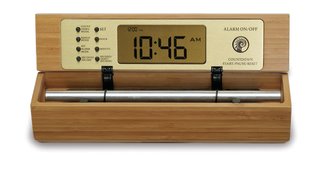 Bamboo Zen Timers with Chime Now & Zen
1638 Pearl Street
Boulder, CO 80302
(800) 779-6383
Posted in Beauty, Chime Alarm Clocks, intention, Meditation Timers, mindfulness practice, Well-being, Zen Timers
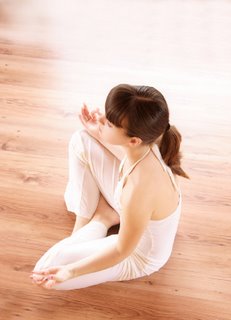 Body and soul in balance An imbalance in your mental energy can leave you unable to focus. Break the pattern, and you’ll effectively return to the present moment — and the task at hand. “I call it changing your state,” says Lucy Jo Palladino, Ph.D., psychologist, attention expert, and author of “Find Your Focus Zone.”
One of Palladino’s tried-and-true balancing practices is four-corner breathing, which combines the use of an outer focal point (a window, a picture frame) with deep, rhythmic breaths. Try this meditation to jolt yourself into high gear or settle a skittish mind. It lowers adrenaline, restores balance, and resets your attention, helping you focus.
Four-Corner Breathing How-To
1. Find an object nearby that has four corners — a box, your monitor, or even this page.
2. Start at the upper-left-hand corner and inhale for 4 counts.
3. Turn your gaze to the upper-right-hand corner and hold your breath for 4 counts.
4. Move to the lower-right-hand corner. Exhale for 4.
5. Now shift your attention to the lower-left-hand corner. Tell yourself to relax and smile. Repeat 3 to 5 times, or as often as you like.
adapted from Body + Soul Magazine, June 2008 by Jill Russell
Use our unique “Zen Clock” which functions as a Yoga & Meditation Timer. It features a long-resonating acoustic chime that brings your meditation or yoga session to a gradual close, preserving the environment of stillness while also acting as an effective time signal. Our Yoga Timer & Clock can be programmed to chime at the end of the meditation or yoga session or periodically throughout the session as a kind of sonic yantra. The beauty and functionality of the Zen Clock/Timer makes it a meditation tool that can actually help you “make time” for meditation in your life. Bring yourself back to balance.
 Zen Timepiece with brass bowl, a perfect meditation timer with gentle gong Now & Zen – The Zen Alarm Clock & Meditation Timer Store
1638 Pearl Street
Boulder, CO 80302
(800) 779-6383
Posted in intention, Meditation Timers, Meditation Tools, mindfulness practice, Well-being, Zen Timepiece by Now & Zen, Zen Timers
« Previous Page — « Previous Entries
Next Entries » — Next Page »
|
|
|
|